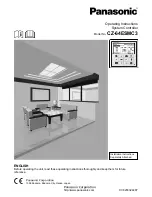
WARNING!
Risk of explosion!
Ignition sources, such as sparks, open flames or
hot surfaces, can lead to explosions in an area
with potentially explosive atmospheres.
–
Get written permission before you start
working in an area with potentially explosive
atmospheres.
–
Do not carry out any work in a potentially
explosive atmosphere.
To remove any potentially explosive atmos-
phere, purge the system with fresh air
before you work on it.
–
Use only tools that have been approved for
use in areas with potentially explosive
atmospheres.
Failure to comply with these safety notes may
lead to an explosion.
For installation please note:
Fix the product only to load-bearing structural
elements.
Load suspension systems only with the weight
of the product. Adjacent components and con-
necting ducts must be supported separately.
Use only approved and adequately sized fixing
material (fixing material is not included in the
supply package).
The product must remain accessible for main-
tenance even after installation.
Important:
If there is a risk that the controller
could be subject to mechanical impact during
operation, protect it accordingly; protection has
to be provided by others.
Be careful to not damage the controller accidentally:
Handle the unit with care.
Lift the unit only by lifting the entire casing.
Do not lift the unit or device by holding the
damper blade only.
①
②
③
④
④
⑤
⑤
⑥
⑥
⑧ ⑦
⑤
Fig. 4: Installation example
1.
Pre-assemble suspensions (Fig. 4/4) at the
installation location, at a distance of approx.
L+100 mm.
2.
Assemble the ducts (Fig. 4/3) and lead them
up to the installation location of the con-
troller.
3.
Fix the controller (Fig. 4/1) including seals
(Fig. 4/7) to the duct (note the airflow direc-
tion marked by the arrow (Fig. 4/2).
4.
Fix the ducts and the controller to the sus-
pension system.
5.
Make the equipotential bonding (Fig. 4/6)
using ground strap and blade connector
(Fig. 4/5).
Installation
CAV controllers EN-Ex
7






























